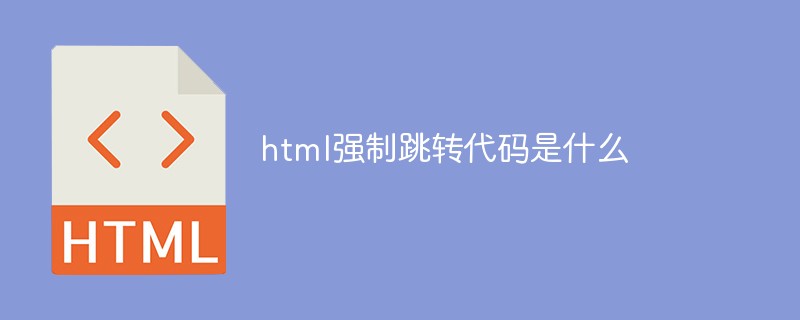Home > Article > Web Front-end > What is the html forced jump code?
In HTML, the forced jump code is "8e4f69af6b626db0b89ed2c1c9fcf3df"; the "http-equiv" of the meta tag and The content attribute is used to set a forced jump to the page, and the url is used to set the jump address.

The operating environment of this tutorial: Windows 10 system, HTML5 version, Dell G3 computer.
htmlWhat is the forced jump code
e8e496c15ba93d81f6ea4fe5f55a2244 tag provides metadata of the HTML document. The metadata will not be displayed on the client, but will be parsed by the browser.
Thee8e496c15ba93d81f6ea4fe5f55a2244 tag is usually located within the 93f0f5c25f18dab9d176bd4f6de5d30e area.
The http-equiv attribute provides the HTTP header with information/value of the content attribute.
The syntax is:
<meta http-equiv="content-type|default-style|refresh">
When the attribute value is set to refresh, define the time interval for automatic document refresh.
Example:
<meta http-equiv="refresh" content="300">
The content attribute gives the value associated with the http-equiv or name attribute.
The example is as follows:
<!DOCTYPE html>
<html lang="en">
<head>
<meta http-equiv="refresh" content="5;url=//m.sbmmt.com/">
</head>
<body>
</body>
</html>The above example will force a jump after 5 seconds of page refresh.
Recommended tutorial: "html video tutorial"
The above is the detailed content of What is the html forced jump code?. For more information, please follow other related articles on the PHP Chinese website!